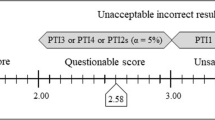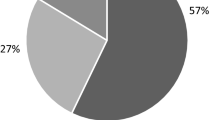Abstract
Most proficiency testing (PT) providers do not calculate the performance of participants that report results that are below the limit of quantification, so-called truncated results ("< results"). The ISO FDIS 13528 standard describes three approaches for the analysis of censored data. DUCARES leaves out truncated results from the statistical evaluation. Although these results are removed from the statistical dataset, it is possible, however, to give a performance indication with z-score ranges. For this, DUCARES has developed the graphical z-score arrow range (ZSAR) method which considers the full interval of potentially possible results as described by the truncated value <x reported by a laboratory, i.e., from the limit value x down to zero. The ZSAR method translates this into a z-score interval and displays it graphically with a double-headed arrow in the distribution plot. This presentation gives the participating laboratory a good indication whether its reported truncated value potentially includes satisfactory scores |z| ≤ 2 or not, and to decide on corrective actions. In this paper, we present the ZSAR method and discuss its advantages in PT.

Similar content being viewed by others
References
ISO 17043 (2010) Conformity assessment—General requirements for proficiency testing. International Organization for Standardization, Geneva
ISO FDIS 13528 (2013) Statistical methods for use in proficiency testing by interlaboratory comparison. International Organization for Standardization, Geneva
Musa Özcan M et al (2008) Determination of some inorganic metals in edible vegetable oils by inductively coupled plasma atomic emission spectroscopy (ICP-AES). Grasas y aceites 59:239–244
Commission regulation (EC) No 1881/2006 ‘Setting maximum levels for certain contaminants in foodstuffs’, Official Journal of the European Union, L 364/5-L364/24
Huber PJ (1981) Robust statistics. Wiley, New York
Acknowledgments
The authors wish to thank the Members of the Steering Group DUCARES/KDLL (Agricultural Laboratories Quality Service) for their advice and the Colleagues of DUCARES B.V. for their cooperation.
Author information
Authors and Affiliations
Corresponding author
Rights and permissions
About this article
Cite this article
van Putten, K.J., Lamers, RJ.A.N. Introduction of z-score arrow ranges (ZSAR) in proficiency testing. Accred Qual Assur 20, 355–358 (2015). https://doi.org/10.1007/s00769-015-1160-1
Received:
Accepted:
Published:
Issue Date:
DOI: https://doi.org/10.1007/s00769-015-1160-1




